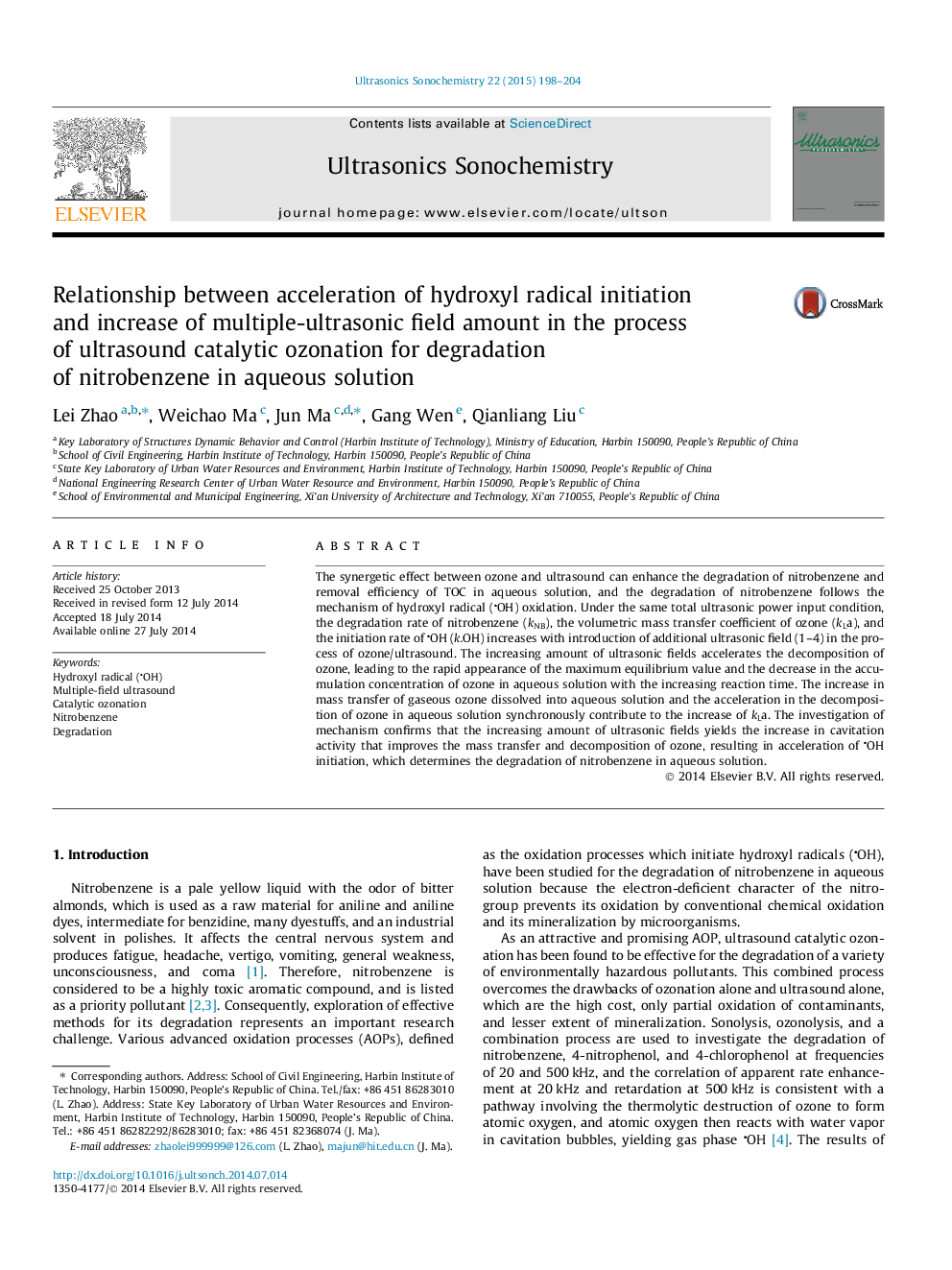| Article ID | Journal | Published Year | Pages | File Type |
|---|---|---|---|---|
| 1269637 | Ultrasonics Sonochemistry | 2015 | 7 Pages |
•Synergetic effect from ozone/ultrasound can enhance degradation of nitrobenzene.•Amount of ultrasonic field presents a positive correlation with kNB, kLa and kOH, respectively.•Multiple-field ultrasound improves mass transfer of ozone.•Increase of kLa is derived from mass transfer and decomposition of ozone.•Multiple-field ultrasound accelerates OH initiation though the increase in cavitation activity.
The synergetic effect between ozone and ultrasound can enhance the degradation of nitrobenzene and removal efficiency of TOC in aqueous solution, and the degradation of nitrobenzene follows the mechanism of hydroxyl radical (OH) oxidation. Under the same total ultrasonic power input condition, the degradation rate of nitrobenzene (kNB), the volumetric mass transfer coefficient of ozone (kLa), and the initiation rate of OH (kOH) increases with introduction of additional ultrasonic field (1–4) in the process of ozone/ultrasound. The increasing amount of ultrasonic fields accelerates the decomposition of ozone, leading to the rapid appearance of the maximum equilibrium value and the decrease in the accumulation concentration of ozone in aqueous solution with the increasing reaction time. The increase in mass transfer of gaseous ozone dissolved into aqueous solution and the acceleration in the decomposition of ozone in aqueous solution synchronously contribute to the increase of kLa. The investigation of mechanism confirms that the increasing amount of ultrasonic fields yields the increase in cavitation activity that improves the mass transfer and decomposition of ozone, resulting in acceleration of OH initiation, which determines the degradation of nitrobenzene in aqueous solution.
